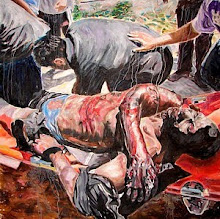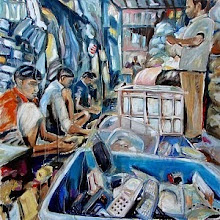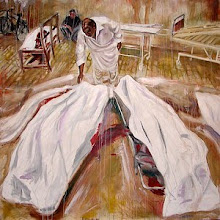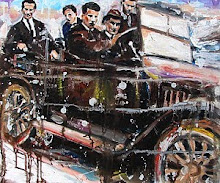Driving past an old thatched cottage on the way to Skerries, north Co Dublin, I noticed it had been recently re-thatched. That seemed like a strange paradox. Here was an example of our traditional vernacular architecture, what we hold up as a surviving sample of our history, yet the thatch was not old – it was brand new. How could we see it as an old house when a good portion of it was brand new?

Constable's Tower before renovation
(Photo: Caoimhghin Ó Croidheáin)

Constable's Tower after renovation
(Photo: Caoimhghin Ó Croidheáin)
In Swords, also in north Co Dublin, where I grew up, there is a castle which is being renovated at the moment. It is a very slow process. In March 1995, a plan for the phased restoration of the castle was approved by Fingal County Council. In 1996, work commenced on the restoration of the Constable's Tower, and this was completed in 1998. The castle was falling apart as stones became rotten and then loose, eventually creating holes in the walls which would soon collapse. The walls are being restored with new stone in a slow yet exquisitely professional manner. The windows have been finished in newly carved sandstone and a wooden replica roof has been put on the Constable's Tower and the chapel. Again following the example above, there are many new features on an old building.

New chapel roof
(Photo: Michael Killen)

One of five heads commissioned by Fingal County Council
for the refurbishment programme being undertaken at Swords Castle.
Each head is authentically dressed according to research into the
clothing popularly worn within Ireland’s Medieval Norman
community in the late 12 th and early 13 th centuries.
Sculpture by Michael Killen (http://www.michaelkillen.ie)
(Photo: Michael Killen)
In Skerries Mills, again in Skerries, much of the material in the mechanisms had rotted. Many parts had to be recreated and rebuilt with old craft skills. The mill is now functioning as before with two windmills and a watermill. Yet, in all of these cases, without constant maintenance these buildings would be a pile of rubble and rotting thatch.
Our past and its traditions are constantly being renewed in the present. Assuming that this process will also continue on into the future, then both the past and the future collapse into a continuous present. The maintenance of the building also requires the constant learning of the skills needed to keep them in good shape and in working order. This knowledge is as important as bio-diversity in that we do not know when in the future such skills and knowledge may become absolutely relevant again, for example the use of new windmill technology for the production of eco-friendly electricity or using wood and straw again to offset the greenhouse gas producing cement and concrete industry.



















No comments:
Post a Comment